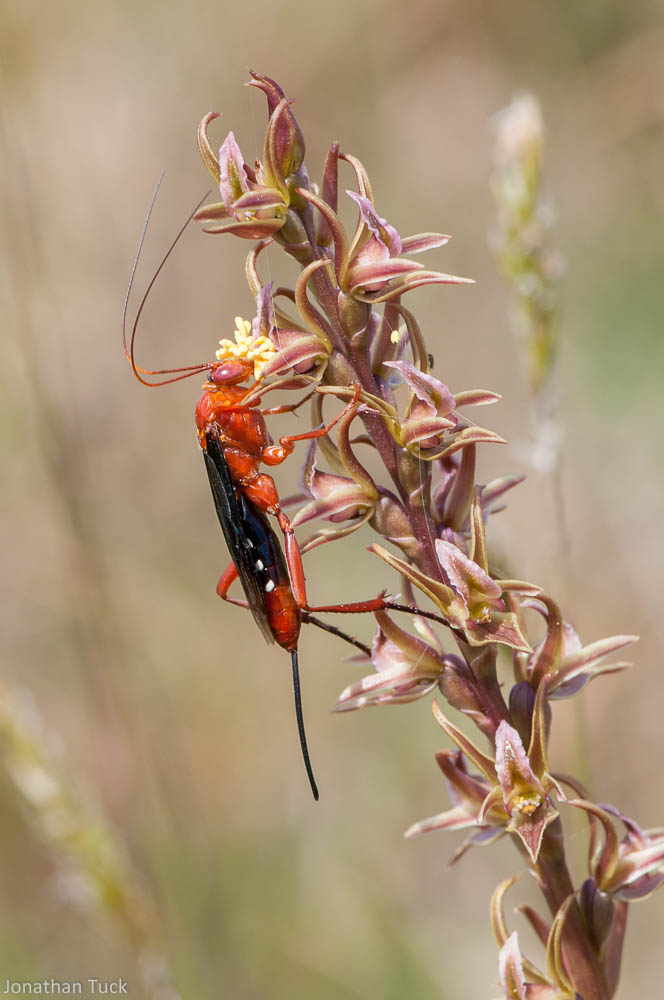Photo of the week – Orchid Dupe Wasp on a Basalt Leek-orchid
Like many of the plant species remaining on the Victorian Volcanic Plain, the endangered Basalt Leek-orchid (Prasophyllum viretrum) is threatened by clearance, fragmentation and degradation of habitat. Despite this, it’s hanging in at a handful of grassland sites near Warrnambool and can be seen flowering en masse late in the year, its dense cluster of flowers poking up through grasses and sedges.
The Orchid Dupe Wasp (Lissopimpla exelsa) seen here is a female, and is collecting pollonia from around the mouth of the flowers.
The male Orchid Dupe Wasp plays an important role in maintaining populations of Cryptostylus (tongue) orchids, thanks to a tricky smoke and mirror tactic by the orchid. The orchid mimics the female wasp, tricking the male into a compromising position as he attempts to mate with it – hence the name Orchid Dupe Wasp. With the experience maybe not quite as he dreamed, he moves on to the next orchid, cross-pollinating as he tries again.
This interaction highlights the need to also consider critical native pollinators when working on the recovery of threatened flora species – sometimes they are as threatened as the plants we are trying to conserve. Conservation measures for pollinators such as the planting of shelter-belts to provide habitat and minimising nearby pesticide use can provide knock-on benefits for threatened flora.
Prasophyllum like this one are usually pollinated by smaller Braconidae or Diadegma wasps. Luckily for the Basalt Leek-orchids at Maam Reserve, the wasps appear to be in healthy numbers, and their passion for the orchid doesn’t seem to be waning!

